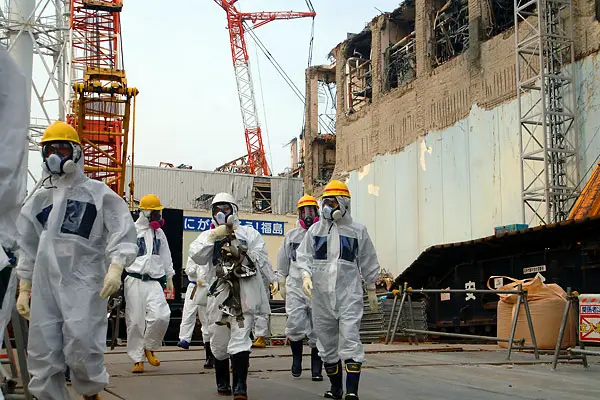Goal Is to Prevent Another Fukushima Reactor Core Meltdown with Advanced Modeling and Simulation
 Image by Tennessee Valley Authority
Image by Tennessee Valley Authority
04/07/2017
By Edwin L. Aguirre
The U.S. Department of Energy (DOE) recently awarded a team of nuclear engineers and scientists led by chemical engineering Assoc. Prof. Dean Wang a three-year, $800,000 grant to develop tools to help keep America’s nuclear power plants safe during extended power disruptions.
“Our project aims to enhance the reactor system analysis code, called RELAP-7, which is used to predict how a reactor’s safety system will respond during an extreme event such as an earthquake or tsunami,” says Wang.
One of the greatest challenges facing nuclear power plant operators is how to keep the reactor core and spent fuel from overheating when the plant loses electrical power—and cooling capacity—for a long period of time. “Using the new analysis code developed in this project, we can better predict and quantify the performance of the reactor’s emergency backup system under extreme conditions,” Wang explains.
The team will develop and use new, realistic reactor modeling and simulation as well as mathematical and computational methods to analyze various reactor accident scenarios. The work could help improve and understand the design safety margins of current and future power plants.
Assisting Wang are Ph.D. students CiCi Pham and Kangyu Ren and postdoctoral associate Xiafeng Xiao. Other collaborators include researchers from Texas A&M University, Oak Ridge National Laboratory and Idaho National Laboratory.
“We will train our students on how to develop and apply the next-generation safety analysis code by having them work closely with researchers from partner institutions. For example, CiCi Pham will spend the summer working on RELAP-7 as an intern at the Idaho National Laboratory,” says Wang.
Lesson Learned from Fukushima
On March 11, 2011, a magnitude-9.0 earthquake struck near the coast of Japan that triggered a tsunami more than 30 feet high. The massive wall of water devastated the Fukushima Daiichi nuclear power plant, cutting off power and cooling to three of the plant’s six reactors. As a result, all three reactor cores largely melted, which led to the release of radioactive materials into the environment. It was the world’s worst nuclear disaster since Chernobyl in 1986.
 Image by Greg Webb/IAEA
Image by Greg Webb/IAEA
In April 2013, experts from the International Atomic Energy Agency toured the heavily damaged Fukushima Daiichi nuclear power station, visible in the background, as part of the agency’s mission to review Japan’s plans to decommission the facility.
Surprisingly, he says, the reactor core isolation cooling system for Fukushima’s Unit 2 reactor continued to operate without any power, which was critical in delaying the core’s meltdown for nearly three days.
“This is a highly important lesson learned from Fukushima that needs to be explored and quantified for the benefit of America’s operating fleet of nuclear power plants,” says Wang.
Since the incident, the U.S. Nuclear Regulatory Commission’s Fukushima task force has recommended measures to protect the country’s nuclear plants against events that could exceed the plants’ design limits.
“Hopefully, our work on RELAP-7 would lead to the successful implementation of the nuclear industry’s emergency mitigation strategies and severe accident management guidelines,” Wang adds.
